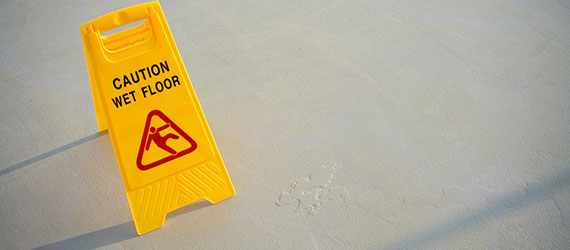Ensuring safety in professional cleaning
A primary purpose of cleaning is to keep people safe from infections, allergens and other harmful agents. That’s a big contribution to sustainability, but as in any work environment, a good occupational health and safety regime is essential to ensure cleaning work is safe for the people who do the cleaning.
The role of hygiene, in which cleaning and disinfection are core processes, is to protect people and animals from disease caused by infectious and/or toxin producing micro-organisms and increasingly from allergens. It also protects food and other products from spoilage or harmful contamination.

Suppliers of cleaning products, tools and equipment must assess the potential hazards. Some cleaning products for example may be irritant, flammable, or harmful if ingested. Equipment may have hazards associated with electricity, steam, mechanical force and weight.
Suppliers must design and develop these items, and the processes and procedures for using them, so as to avoid them giving rise to significant risks during use. For products with volatile ingredients, for example, formulations and use conditions are designed to keep concentrations in the air, and hence any amounts inhaled, well within recognised safety limits. The use of protective equipment such as gloves or goggles may be recommended in some cases.
Safe design is supplemented by detailed information that must be provided to customers about products, about any hazardous properties, and about the procedures and precautions necessary to avoid risks. Central to this are the comprehensive Safety Data Sheets that must be drawn up by suppliers for each and every cleaning product, and provided by law to every customer using the product. These sheets detail the key properties of the product, including a listing of any hazardous ingredients. They spell out toxicological information on the products and list standard safety information that must appear on labels.
Safety Data Sheets also help avoid risks by describing conditions of storage and transport, and conditions of use to control exposure, including specifying personal protection equipment such as gloves or goggles. Finally, in case of accidents, the data sheet describes the appropriate first aid measures, firefighting methods, and procedures for spill containment and disposal.
Hazardous cleaning products must also be labelled by law in a specified way using symbols and standard phrases to highlight in clear, succinct terms, specific hazards such as:
- R38 Irritating to skin
- R41 Risk of serious damage to eyes
And similarly to guide safe use, such as:
- S26 – In case of contact with eyes, rinse immediately with plenty of water and seek medical advice.
- S36 – Wear suitable protective clothing, gloves and eye/face protection.
Suppliers should work with customers where needed to train staff in the safe use of the product, including providing operations manuals and helping draw up any necessary emergency plans.
Both the user organization and each person doing cleaning work also share the responsibility for ensuring professional cleaning is safe, by ensuring instructions and safe working practices are properly followed.